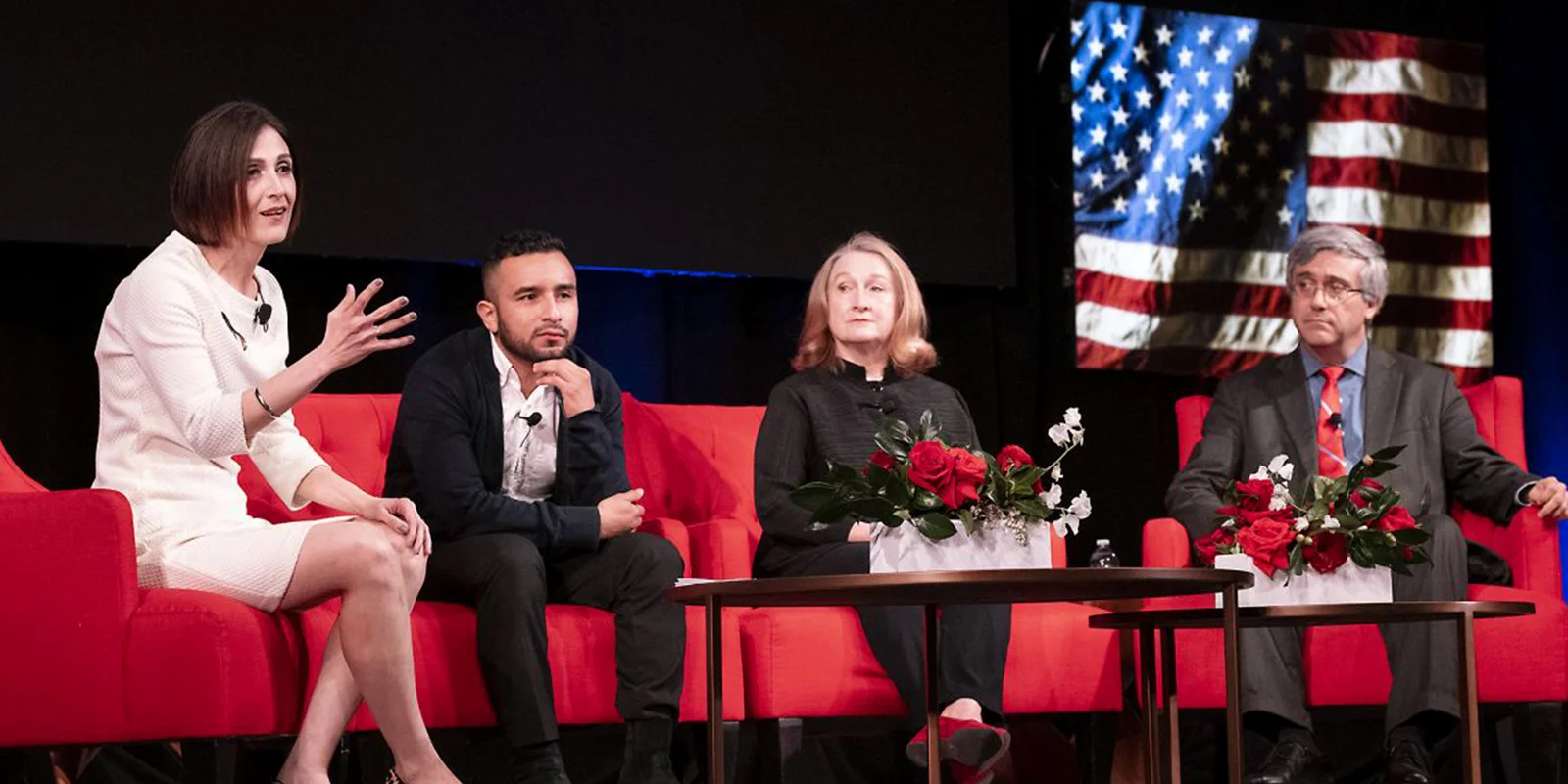
TIPS FOR COVERING LATINO COMMUNITIES IN SPANISH
Note: For the purposes of this blog and its goal of providing tips for communications professionals seeking to engage Spanish-speaking journalists, the term ‘Latino’ is used in lieu of ‘Latinx’.
Latino communities played a pivotal role in the 2022 midterm election, just as they did in the 2020 presidential election. Combined with a record number of Latino state and congressional candidates elected last fall, there is no denying that Latino communities will continue to play a decisive role in our nation’s politics. That’s why, as communicators, it’s so important that we work to uplift Latino voices in an authentic and representative way.
To help groups looking to strengthen their efforts to effectively engage Latino communities, ReThink has pulled together some tips and advice for engaging and pitching Latino media in Spanish (TV, radio, and print outlets alike).
TV, RADIO, OR PRINT?
Before you start pitching Latino media, it is important to have a clear understanding of how the Latino community prefers to get their news. A study by Nielson in 2020 found that 62% of Latinos considered radio a good source of information, while only 20% of all Latinos considered cable TV a “trustworthy” news source. Is that to say it’s impossible to reach Latinos through TV or print news? Not at all! However, it is something to consider when developing your journalist outreach plan.
We must also take into account that Latinos are not a monolith, with factors like location, education, age, ethnicity, and socioeconomic status all influencing the various ways in which they consume information. Accordingly, all of these demographics should be taken into consideration when determining what medium you are planning on using to reach folks.
Usually, Latino-focused publications, radio shows, and media outlets tailor their content to specific Latino communities. Therefore, we suggest keeping up with the Latino media landscape and tracking an outlet’s coverage. Not only will this empower you to make more strategic and targeted pitches to reporters covering your “beat,” it can also help you find some new Latino voices who can speak to the communities you are seeking to engage.
If you are interested in keeping up with Democracy-related issues including money in politics, fair courts and voting rights, sign up for our daily clips featuring a twice-weekly Spanish-language clips segment!
For instance, let’s say you were pitching a story on immigration along the US-Mexico border. Would you pitch it to a Puerto Rican newspaper based in New York City or a San Diego-based radio show with a predominantly Mexican audience? Odds are, you’d be better off pitching the San Diego radio show for two reasons: location and audience. Situated right along the US-Mexico border, San Diegans are more likely to be well informed on the border situation, whereas someone in New York City might not be. Then we’ve got – audience. Pitching a story on immigration along the US border with Mexico would have a far better chance of getting a bite from a radio station or newspaper that tailors to the Mexican community rather than one with a predominantly Puerto Rican audience. The more you know about your target audience, the better, as you can tailor your pitches to get a higher “bite” rate.
USE FORMAL LANGUAGE
While ‘tú’ and ‘usted’ are both Spanish words for “you,” they carry very distinct levels of respect that non-native Spanish speakers need to understand. When addressing a family member or a close friend, it is common practice to address them informally as ‘tú’. But when addressing a stranger, somebody older, or in a position of authority, address them formally as ‘usted’—this includes journalists.
In other words, when engaging with Spanish-speaking journalists, it is best to use formal language. Not only is it professional, it is also a sign of respect.
MESSENGERS MATTER
Identify trusted spokespeople from the Latino community who can speak to your issues and lift up their voices in an authentic way. If you or your organization are just beginning to engage Latino communities, your voice and reputation might not carry much weight in the community (at least not yet). Creating partnerships with local Latino leaders or organizations can be an effective way to build your standing within the community and local or regional media.
|
USING KEY WORDS TO MAKE A CONNECTION
To increase your chances of success when pitching Latino media, we recommend that you clearly spell out the connection between your work and the outlet’s audience. While it’s true that Latinos are not a monolith and represent a wide range of ideas and values, there are some key issues that tend to be important across Latino communities. Tying in your story pitch to one of these issues, and its tangible ramifications to your target audience, can drastically improve your chances of being featured—and catching your audience’s attention.
For example, let’s say you want to pitch a Latino radio station on the recent revelations that your state utility funneled millions of dollars in “dark money” to a gubernatorial candidate in your state. There’s a possibility that this framing might not resonate with Latino folks who might disregard this sort of corruption as “politicians being politicians.”
A Pew Research Center study on the 2022 Midterm elections, however, found that the economy was the top-line issue affecting registered Latino voters’ vote during the most recent election cycle, followed by healthcare, education, and violent crime. And by connecting the issue of ‘dark money’ to real economic implications (e.g., higher utility bills in a city with a large Latino population), you could drastically improve your chances of getting the radio station to bite.
Check out ReThink’s Spanish-language pitching templates to jumpstart your own pitches!
POSITION YOURSELF AS A RESOURCE
Let folks know you’re at their disposal. A simple, ‘estoy a sus ordenes’ or ‘estoy a su disposición’ can go a long way in building relationships with Spanish-speaking journalists.
Offer talking points, intel, and context whenever you can. Meetings should not be transactional (or at least, not while you’re still in the stage of building a relationship with a reporter). Media outreach is always a two-way street, but even more so when contacting ethnic media. Don’t expect anything in return without providing some value and building trust first. Good relationships with journalists can last decades.
BE WARY OF MISINFORMATION AND INVEST IN CULTURALLY-COMPETENT TRANSLATION
With limited resources for Spanish-language monitoring on social media, Latinos are particularly vulnerable to misinformation. As communications professionals, we must keep our shared goal in mind: getting accurate, relevant information to the community. Here are some ways we can combat misinformation:
- Verify the source. Is the person, organization, or outlet a trusted source? If not, don’t include their data, insights, talking points, etc.
- Invest in culturally-competent translation. While we might be tempted to use Google Translate or other translation applications as a quick and easy way to translate information, the results are usually not the best. Commonly used terms and phrases in English may not translate well in Spanish or might have multiple translations. Instead, invest in a two-step process. Hire a skilled person to complete the initial translation, preferably someone who is familiar with your target audience’s dialect. Then, have a native speaker from the community review the translation to ensure that the language is culturally competent and aligned with your messaging strategy.
Featured Resource: Equis’ Spanish-language Recommendations and Glossary provides a great list of culturally competent, Spanish-language terminology used in politics in the United States.
FOLLOW UP WITH FOLKS AND GIVE KUDOS
Once your story has landed or your radio interview has aired, follow up with the journalist or radio producer to congratulate them on the piece. ‘Me encantó su artículo’’ and ‘su entrevista fue genial’ are great follow-ups to let journalists know that you are invested in their work.
Reporters often receive negative feedback, so when you see good coverage, celebrate their work. Not only does this demonstrate that you are invested in their work, it can also help you cultivate a great working relationship with the journalist for the future.
Tying it all together
As communicators we must acknowledge our inherent position of power and do everything within said power to elevate Latino voices in an authentic and representative way: free of stereotypes, assumptions, and generalizations.
Whether you are fluent in Spanish or a beginner, Latino or non-Latino, a senior media director or a fellow, you can use these tips to engage Latino communities.
¡Gracias por todo lo que hacen!
(Thanks for all that you do!)



